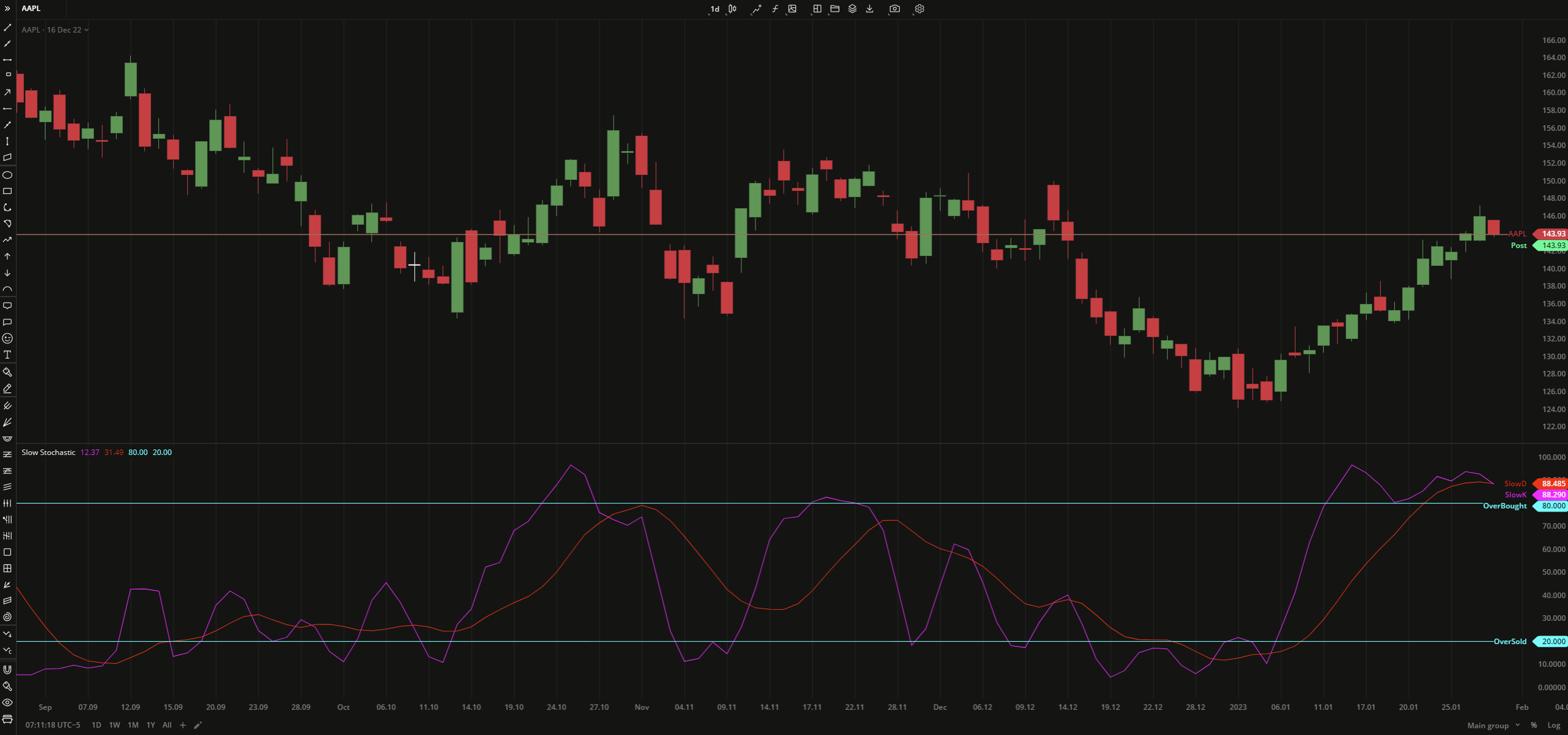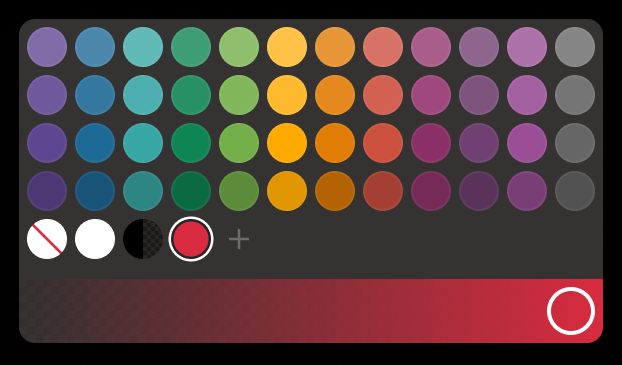- DarkLight
Slow Stochastic
- DarkLight
Slow Stochastic is a momentum oscillator that measures the market strength by comparing the closing price of a security with its price range over period of time. The oscillator is bounded to the range from 0 to +100 and is consisted of two lines: SlowK, derived out of Fast Stochastic by applying 3-day Simple Moving Average (SMA) to its FastK plot, and its smoothed version SlowD. Crossover of SlowK and SlowD with overbought/oversold levels generates sell (above 80) and buy (below 20) signals respectively.
%K = [ (C - L) / (H - L) ] * 100
SlowK = MA(%K)
SlowD = MA(SlowK)
where:
%K – FastK
C – the most recent closing price
L – the Lowest price during period
H – the Highest price during period
MA – Moving Average
 Slow Stochastic
Slow Stochastic INPUTS
| Input | Description |
|---|---|
| KPeriod | The number of bars used to calculate FastK |
| DPeriod | The number of bars used to calculate SlowD |
| Overbought | The price to fix the overbought level at |
| Oversold | The price to fix the oversold level at |
| Average |
|---|
The following Moving Average types are available for calculations:
|
PLOTS
The plot renders the data you are working with on the chart. You can show/hide a plot by clicking the corresponding item in the settings. Every plot has a set of basic settings that you can change: color, weight, and type.
| Plot | Description |
|---|---|
| SlowK | The SlowK plot |
| SlowD | The SlowD plot |
| OverBought | The overbought level |
| OverSold | The oversold level |
| Color |
|---|
Click the color rectangle under the plot's name to open the palette. Use the slider at the bottom to set the opacity of the color.  Palette PaletteTo create a custom color:
The custom-created colors are added to your palette. To remove a custom color, drag it out of the palette. |
| Weight |
| Change the value (in px) to adjust the thickness of the plot. |
| Type |
The following plot types are available:
|
OVERLAYING
Check Overlaying to display the indicator on the chart. Otherwise, the indicator is shown in a study pane down below.


